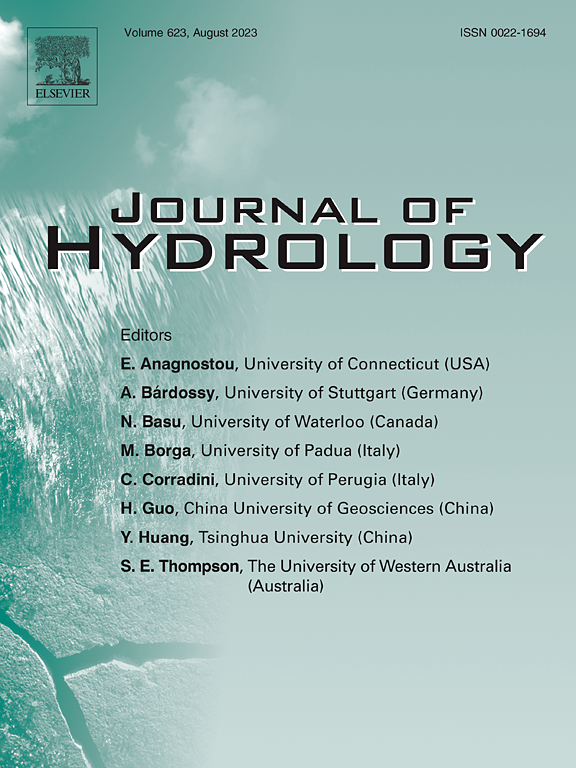A standard for dew measurement
IF 5.9
1区 地球科学
Q1 ENGINEERING, CIVIL
引用次数: 0
Abstract
There is a growing interest to harvest water from the air by passive means (dew). However, there is surprisingly up to now no universal reference measurement for dew. The main difficulty is obtaining well-defined radiative cooling and heat exchange with air. For this purpose we report here a numerical and experimental study of a symmetrical condensing device (disk with fairing) where radiative cooling and air flow are well characterized. The different condensing materials (polymethyl methacrylate, OPUR polyethylene-based foil, clear glass) are such that their emissivity is close to that of water. A one-year experiment (June 2023 – July 2024) was carried out in Ajaccio (Corsica, France) at the Météo France airport meteorological station. The site configuration is characterized by a steady wind blowing from the SW (day, sea breeze) and the NE (night, mountain breeze), mimicking a wind-tunnel. Dew was continuously measured by weighing, and the condensing disk temperature was mapped with an IR camera. The temperature profiles were seen to compare well with a numerical simulation of the air flow. The heat exchange coefficient was found to follow a square-root dependence on air flow velocity (wind speed plus natural convection), as expected for laminar flow. It follows from the study that the rounded disk configuration can be defined as a dew measurement standard. The corresponding device can be easily reproduced and allows quantitative comparison of dew yields to be made anywhere.
露水测量标准
人们对通过被动方式(露水)从空气中收集水分的兴趣越来越大。然而,令人惊讶的是,到目前为止,还没有一个通用的露水参考测量方法。主要的困难是获得明确的辐射冷却和与空气的热交换。为此,我们在此报告一种对称冷凝装置(带整流罩的圆盘)的数值和实验研究,其中辐射冷却和空气流动具有很好的特征。不同的冷凝材料(聚甲基丙烯酸甲酯、OPUR聚乙烯基箔、透明玻璃)的发射率与水接近。2023年6月至2024年7月,在法国科西嘉岛的阿雅克肖(Ajaccio)的msamtsamo France机场气象站进行了为期一年的试验。场地配置的特点是稳定的风从西南(白天,海风)和东北(夜晚,山风)吹来,模仿风洞。用称重法连续测量露水,并用红外相机对冷凝盘温度进行测绘。温度分布与气流的数值模拟相吻合。研究发现,热交换系数与空气流速(风速加上自然对流)呈平方根关系,与层流的预期一致。研究结果表明,圆盘结构可以定义为露珠测量标准。相应的设备可以很容易地复制,并允许在任何地方进行露珠产量的定量比较。
本文章由计算机程序翻译,如有差异,请以英文原文为准。
求助全文
约1分钟内获得全文
求助全文
来源期刊

Journal of Hydrology
地学-地球科学综合
CiteScore
11.00
自引率
12.50%
发文量
1309
审稿时长
7.5 months
期刊介绍:
The Journal of Hydrology publishes original research papers and comprehensive reviews in all the subfields of the hydrological sciences including water based management and policy issues that impact on economics and society. These comprise, but are not limited to the physical, chemical, biogeochemical, stochastic and systems aspects of surface and groundwater hydrology, hydrometeorology and hydrogeology. Relevant topics incorporating the insights and methodologies of disciplines such as climatology, water resource systems, hydraulics, agrohydrology, geomorphology, soil science, instrumentation and remote sensing, civil and environmental engineering are included. Social science perspectives on hydrological problems such as resource and ecological economics, environmental sociology, psychology and behavioural science, management and policy analysis are also invited. Multi-and interdisciplinary analyses of hydrological problems are within scope. The science published in the Journal of Hydrology is relevant to catchment scales rather than exclusively to a local scale or site.
 求助内容:
求助内容: 应助结果提醒方式:
应助结果提醒方式:


